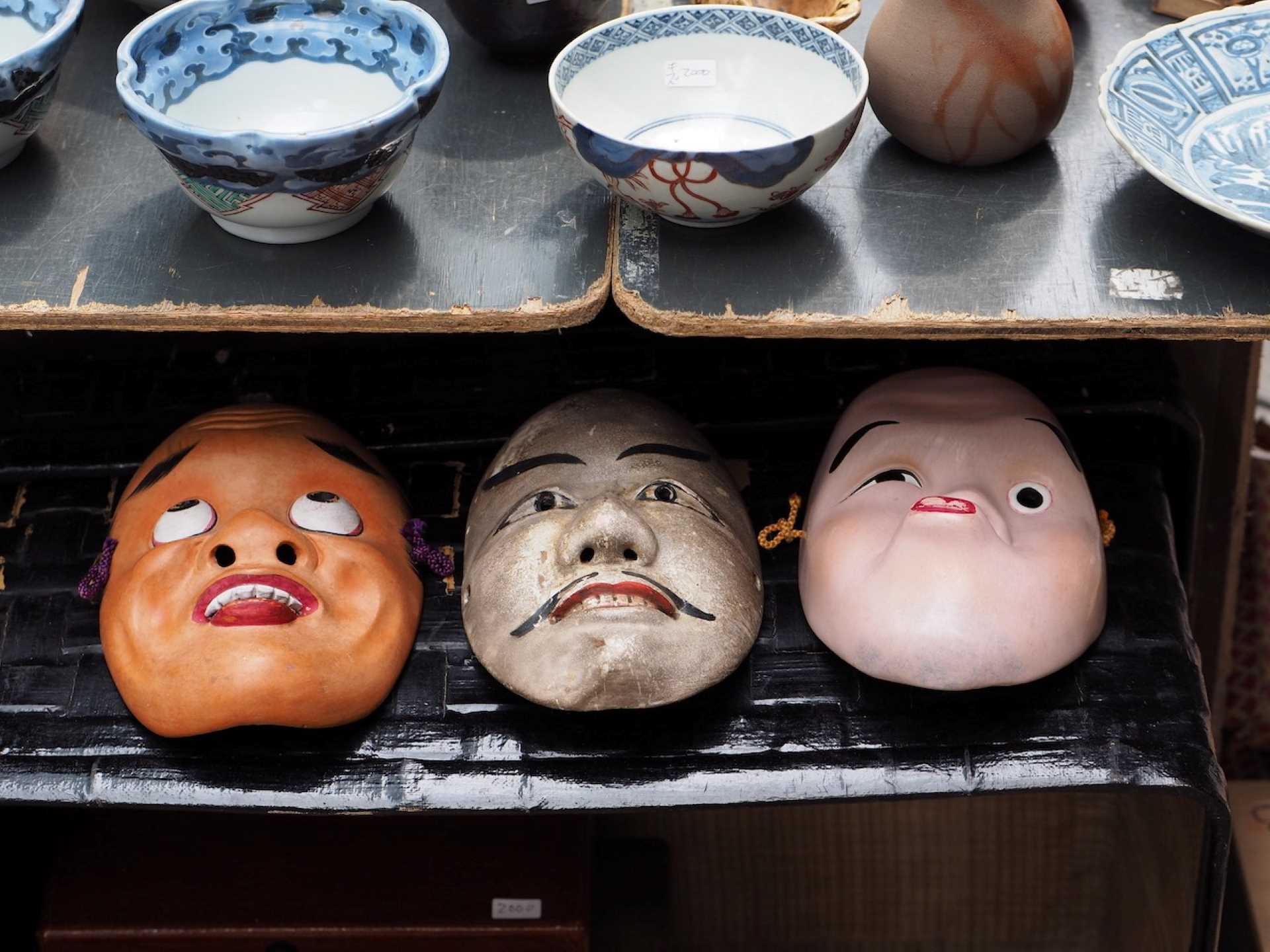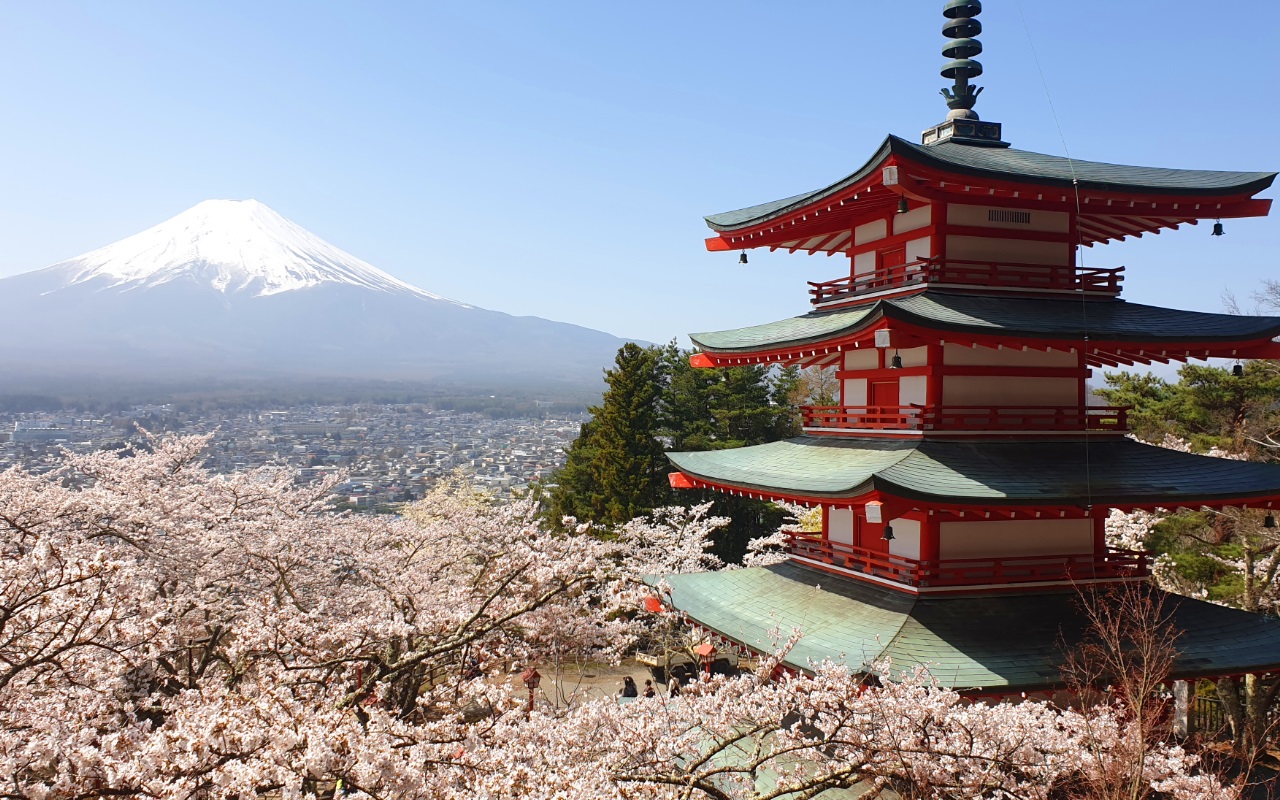Flea markets may not be the first thing that comes to mind when thinking of Japan, but visiting one in your travel itinerary can offer an interesting way to immerse yourself in local culture. Spending a few hours exploring these markets allows you to mingle with locals and uncover delightful surprises.
Exploring a secondhand market presents an excellent chance to discover one-of-a-kind souvenirs without breaking the bank. As you wander among the stalls, you will probably stumble upon items perfect for displaying at home as keepsakes of your trip or quirky treasures that will impress your friends far more than the ordinary “Tokyo” T-shirt (probably made in China).
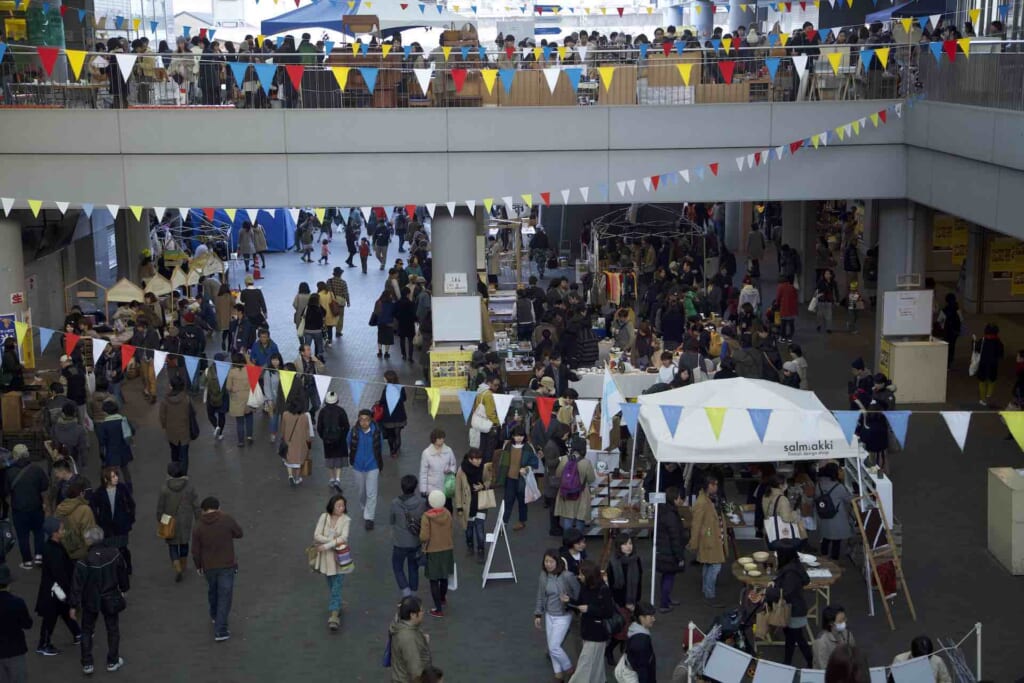
Buying a second-hand item also means bringing home something with a story and contributing to sustainability through recycling. The Japanese are very attached to mottainai, an expression of regret for waste. Recently, it has become an environmental slogan to raise awareness of reuse, recycling, and waste reduction.
Must-buy Items at Flea Markets in Japan
You can find several kinds of items at flea markets in Japan (called kotto-ichi 骨董市 or garakuta-ichi がらくた市). Some events focus more on second-hand and vintage, while others are on antiques.
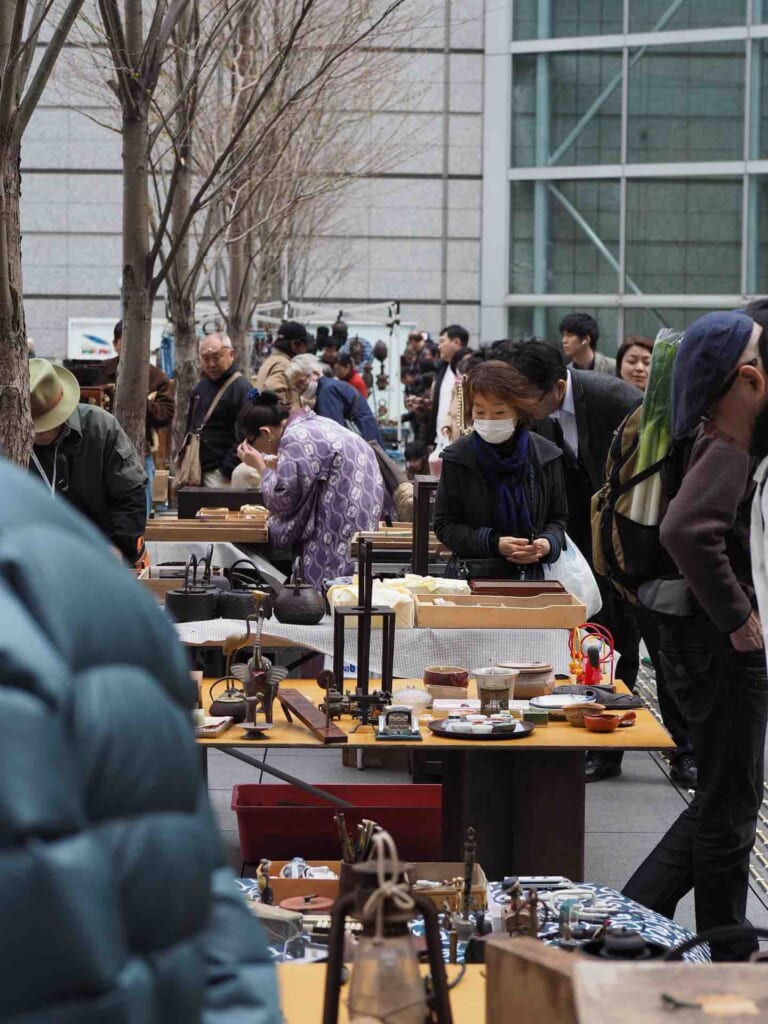
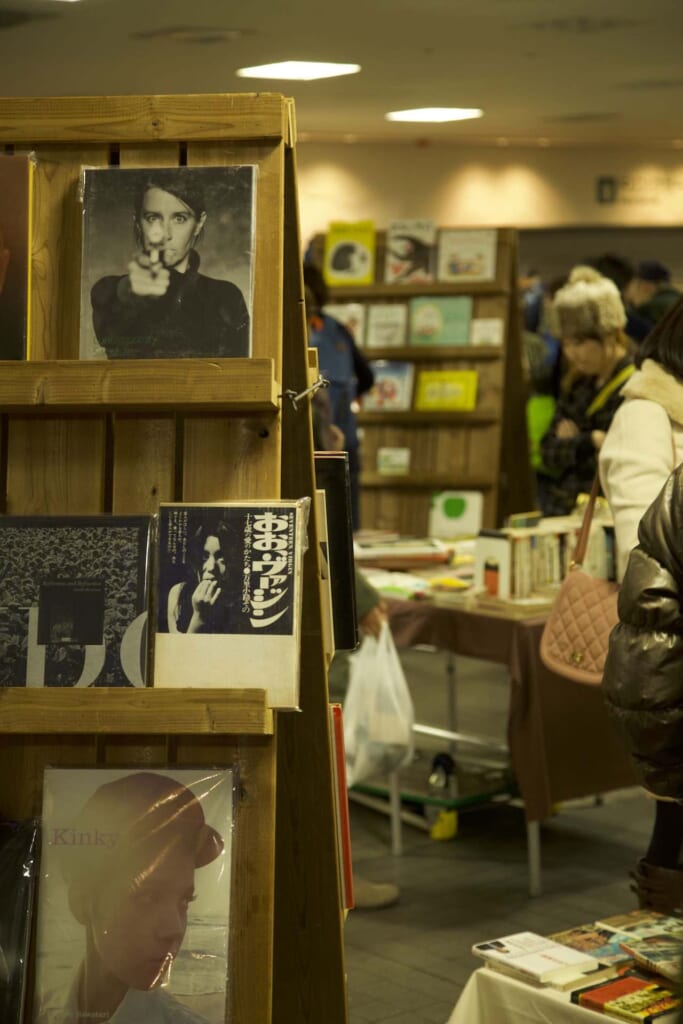
Want to buy an authentic kimono without spending a fortune? You will be spoilt for choice. If you are seeking something for everyday wear, consider an obi to use as a belt or a haori, which is ideal for layering even over a simple pair of jeans.
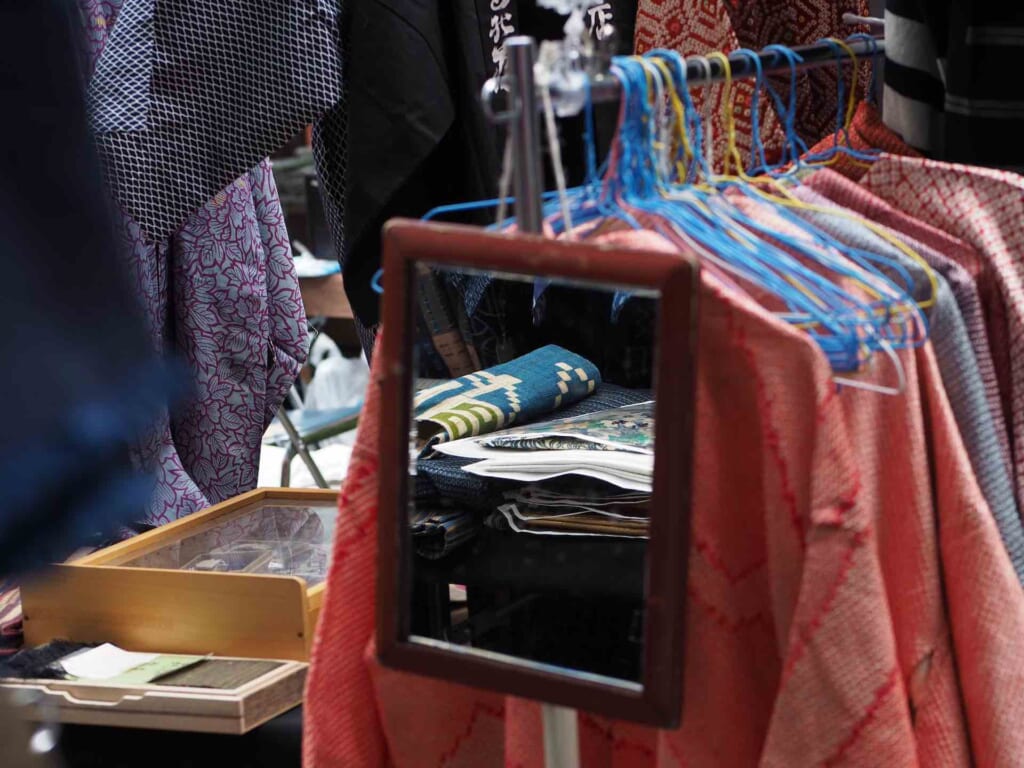
And why not treat yourself to some pottery to experiment with Japanese cuisine once you return home, or a set of tea cups? A flea market is the right place for such treasures.
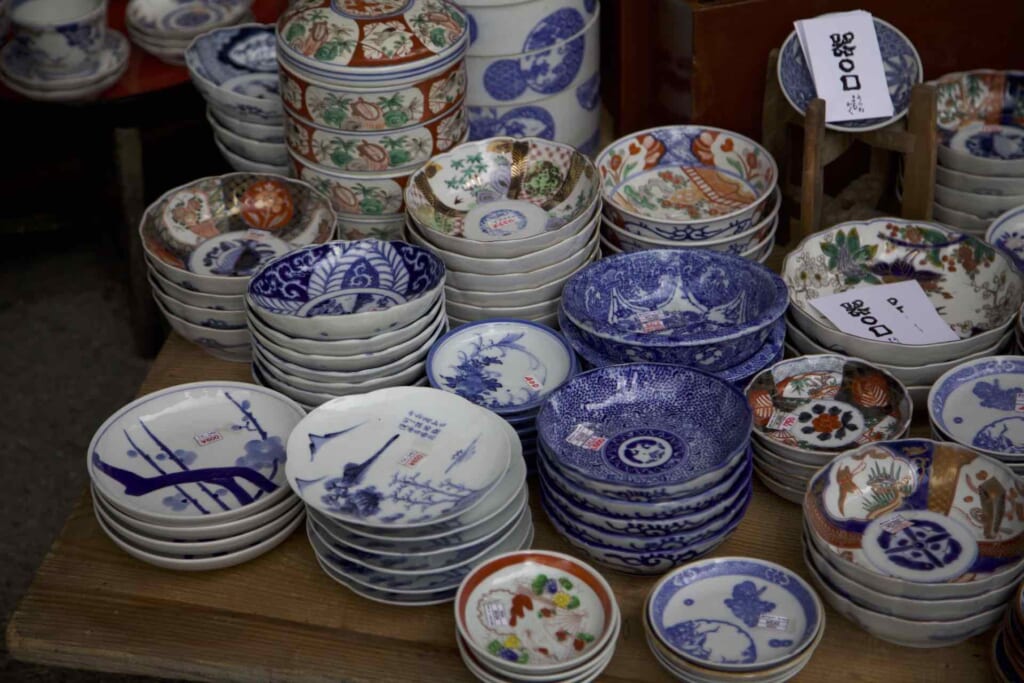
Besides traditional clothes and ceramics, at flea market stalls, you can find ukiyo-e prints, CDs and records, vintage toys, lacquerware, and accessories. Retro-gaming enthusiasts are sure to find something for their collection of vintage Japanese video games. Those with a particular interest in samurai and ancient traditions can look for decorated helmets and tsuba (Japanese sword guards) or traditional masks.
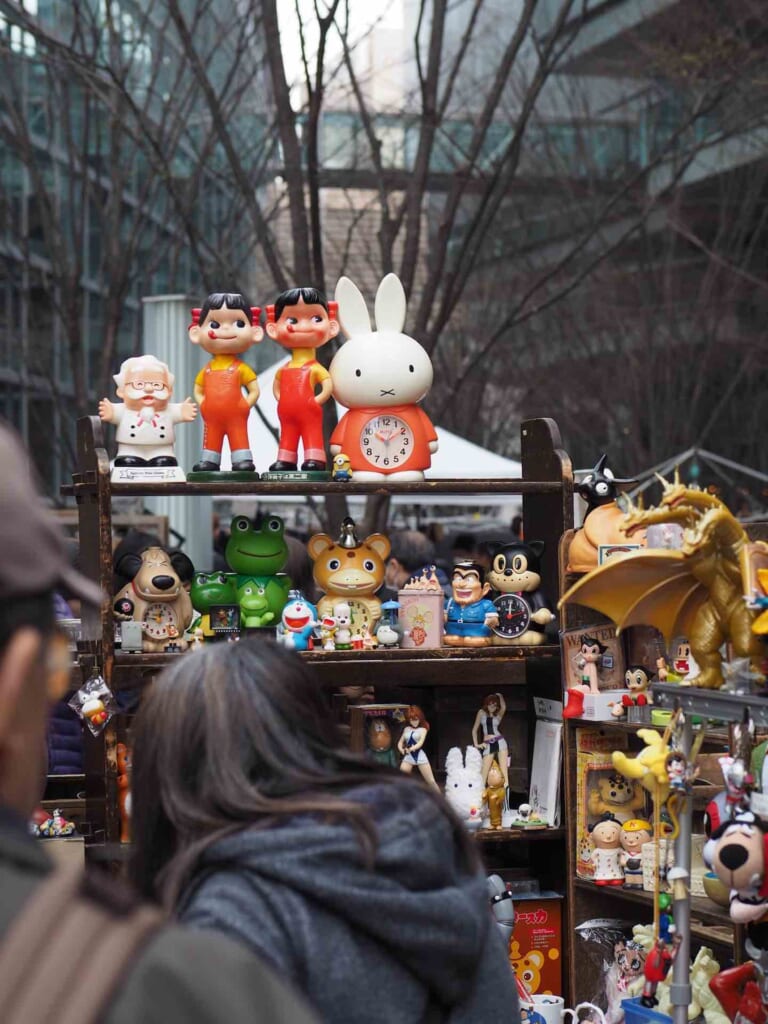
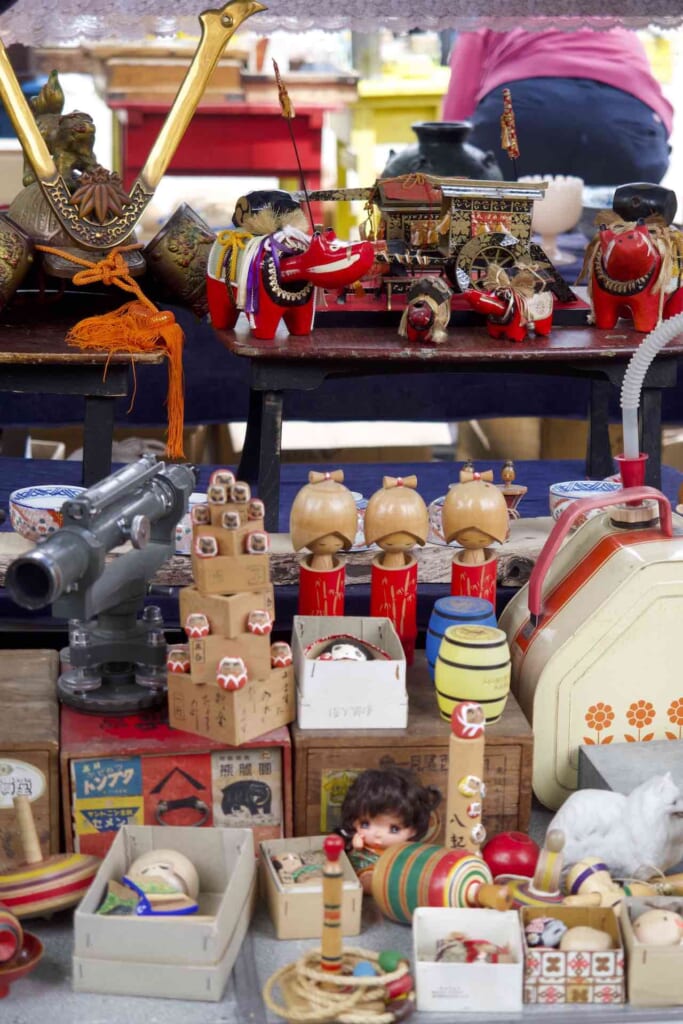
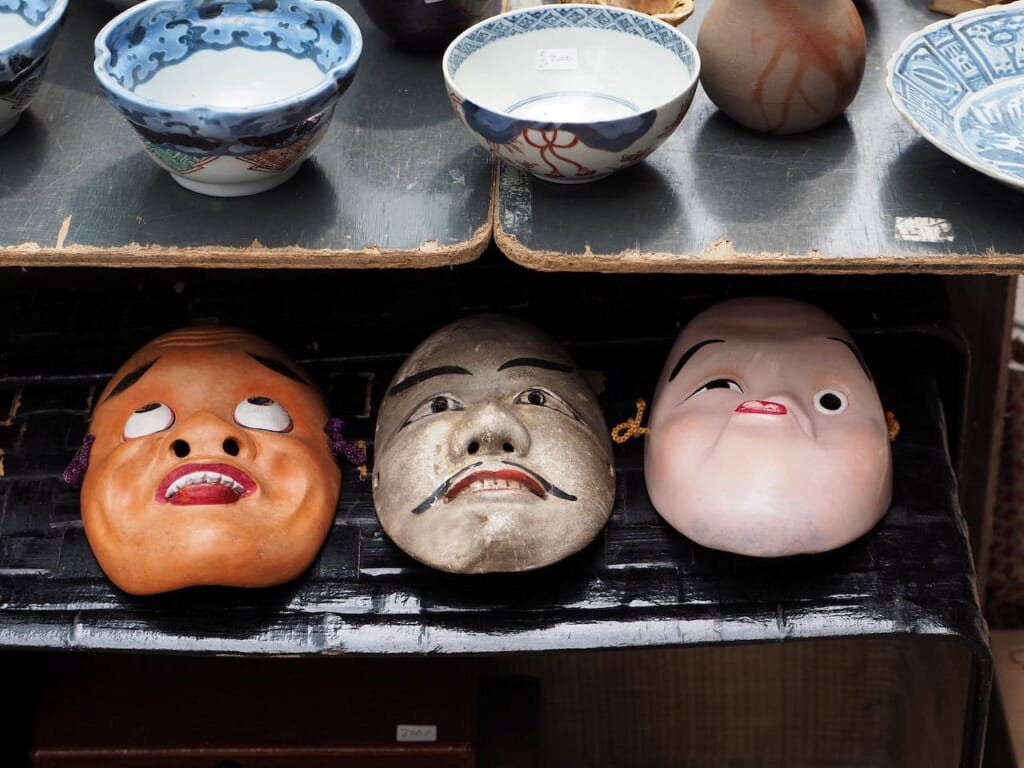
Kokeshi dolls are also very popular, especially the authentic handcrafted wooden types with distinctive cylindrical shapes and traditional decorations. Unlike the mass-produced, colorful versions today, these dolls often boast age, adding to their charm.
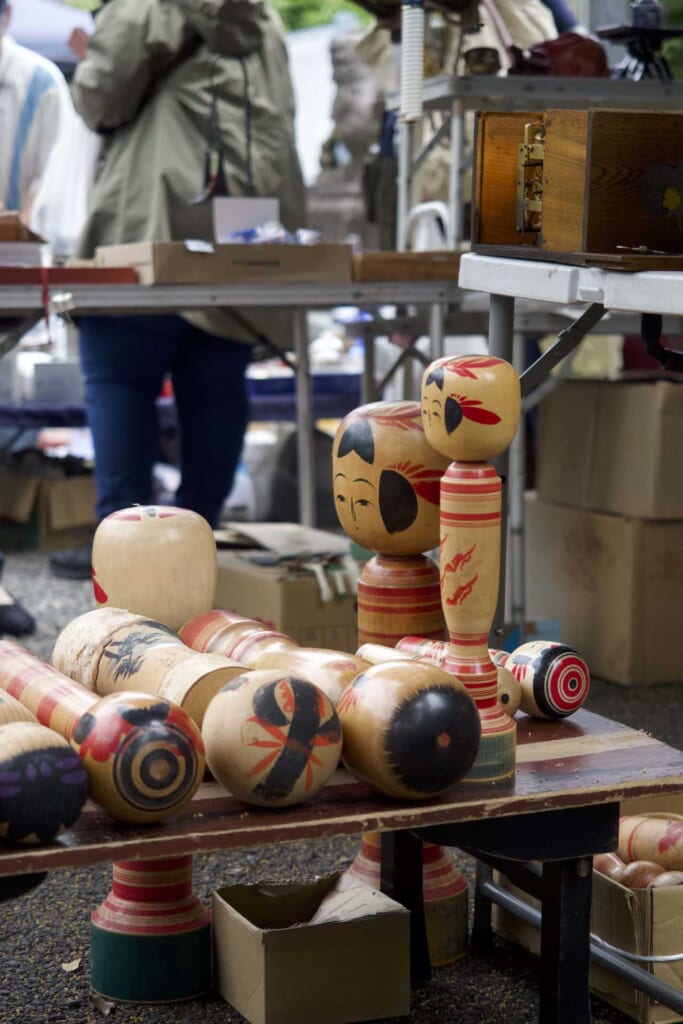
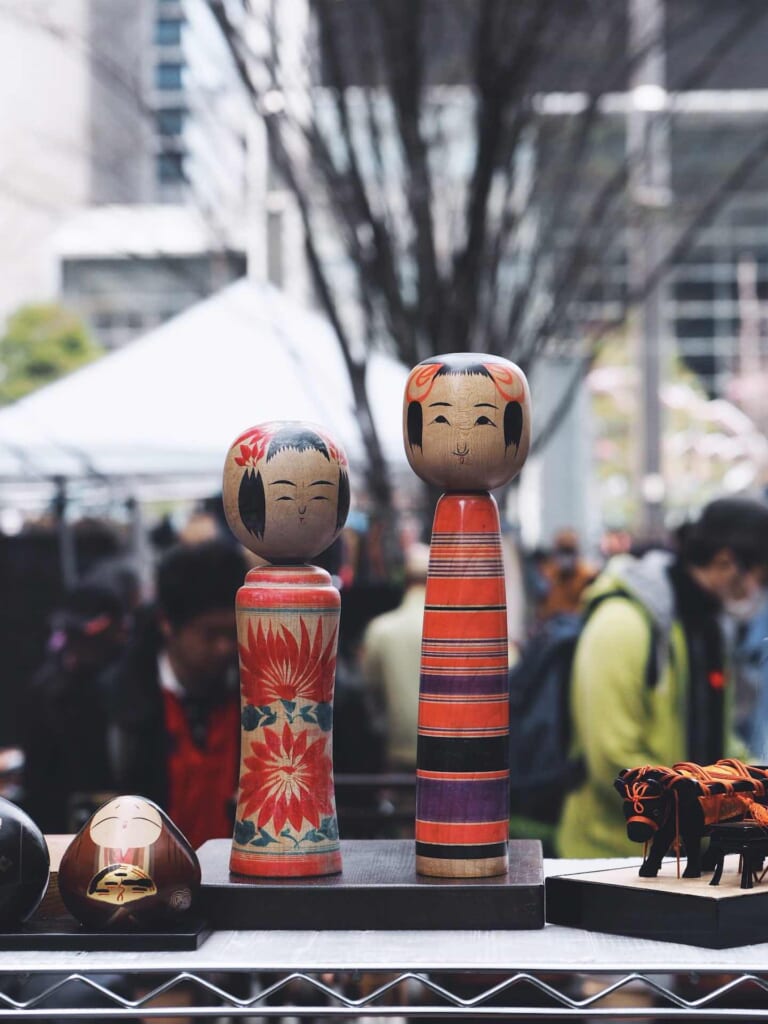
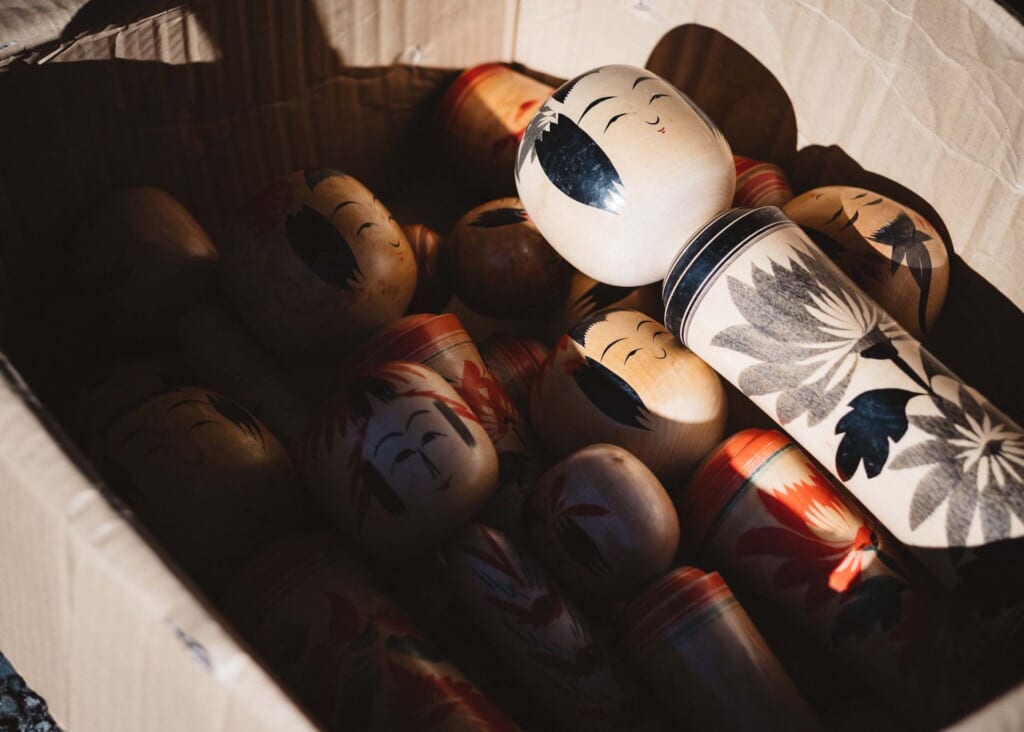
Durable, affordable, and conveniently sized, they make for the perfect gift!
How to Shop at Street Markets in Japan
Except for the kind of items for sale, Japanese second-hand markets are not too different in organization from those we are used to. Interestingly, many are hosted at temples and shrines, especially those focused on antiques. This setting offers a unique opportunity to combine sightseeing with browsing through the stalls.
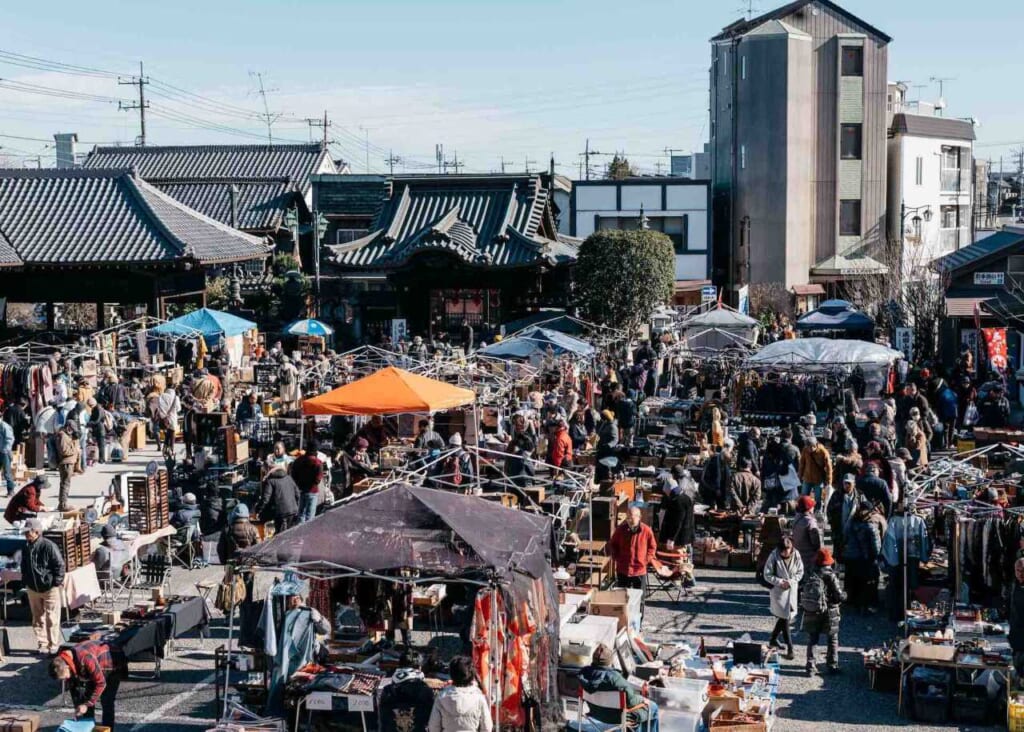
If you are looking for bargains, take your time to look at the items on display and avoid settling for the first stalls you come across. Bring enough cash, preferably in small denominations, including plenty of 100 yen coins. Haggling is allowed, but don’t overdo it, and always show respect for the seller and their goods.
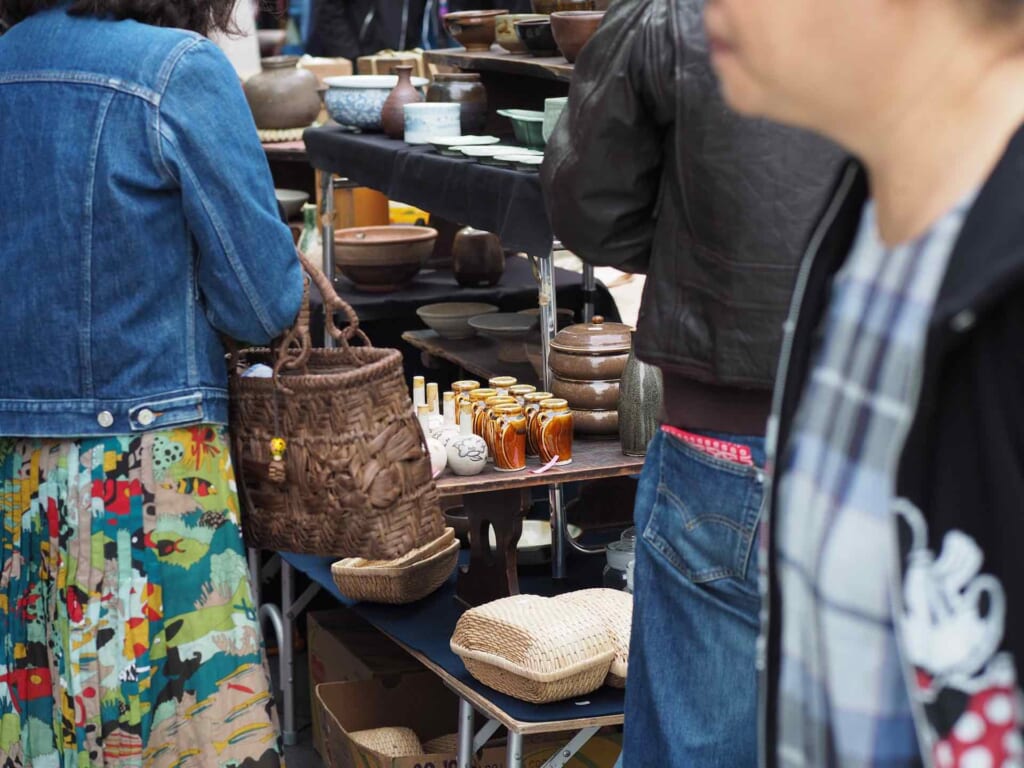
Finding updated information about the markets’ schedules can be challenging. While some markets are held regularly, they are occasionally canceled due to bad weather or feature fewer exhibitors (especially during summer months due to the heat). Additionally, most market or temple websites providing official information are only available in Japanese. We recommend checking websites that offer up-to-date information on calendar events in English.
The Best Flea Markets in Tokyo and Kansai
Which second-hand markets are worth visiting? Here is a list of some of the most popular markets in the main cities, but feel free to discover new gems!
Best Flea Markets in Tokyo and Surrounding Areas
- Tokyo City Flea Market (Ohi Racecourse Flea Market): It is one of the largest and best-known flea markets in Tokyo, with hundreds of vendors. It is hosted almost every weekend at the Ohi Racecourse (大井競馬場, Ōi Keiba-jō) in Shinagawa. You can find updated information on the Tokyo Recycle website (Japanese only).
- Oedo Kotto-ichi (大江戸骨董市: Japan’s largest outdoor antique market. It usually occurs every first and third Sunday of the month at the Tokyo International Forum. It is very convenient to visit given its central location in the city: it is only 250m from Yurakucho Station on the Yamanote Line. Since 2012 there has also been another edition in a different location, Yoyogi Park Keyaki-Namiki, but the dates are irregular.
- Kawagoe Narita Fudoson Nomi-no-ichi (川越成田不動尊蚤の市): This popular flea market is held in Kawagoe (川越), about an hour and a half by train from Tokyo. It is a perfect chance to visit this delightful town known as ‘Little Edo’. The fair takes place outdoors on the 28th of each month and hosts over a hundred stalls, many dedicated to kimono and related accessories.
Best Flea Markets in Kyoto and Osaka
- Tenjin-san Festival (天神さんの市) | Kyoto: This market is held every 25th of the month in the Kitano Tenmangu Shinto shrine and the streets surrounding it. In addition to stalls selling second-hand goods and antiques, several Japanese street food vendors are present.
- Toji Kobo-ichi (東寺弘法市) | Kyoto: One of the city’s largest markets, it is held on the 21st of every month at Toji Temple, about a 15-minute walk from the Hachijo exit of Kyoto JR Station or 10 minutes from Toji Station on the Kintetsu Line. Every first Sunday of the month, the temple also hosts an additional antique market called Garakuta-ichi.
- Banpaku Omatsuri Hiroba Garage Sale (万博お祭り広場ガレージセール) | Osaka: Most of the vendors are private individuals and not professionals. It takes place two or three times a month, usually on Sundays, at Banpaku Kinen Koen Park (万博記念公園).
- Shitennoji Kotto-ichi (四天王寺骨董市) | Osaka: Osaka’s primary second-hand and antiques market is housed in the Shitennoji Buddhist temple, one of the oldest in the city. It takes place every month on the 21st and 22nd, with around three hundred exhibitors and street food stalls.
Even if you don’t have anything specific to buy, exploring a Japanese flea market can add depth to your trip and uncover lesser-known aspects of Japan. It’s also a great way to connect with local people: asking “ikura desuka” (“How much is it?”) might spark some fascinating conversations!


